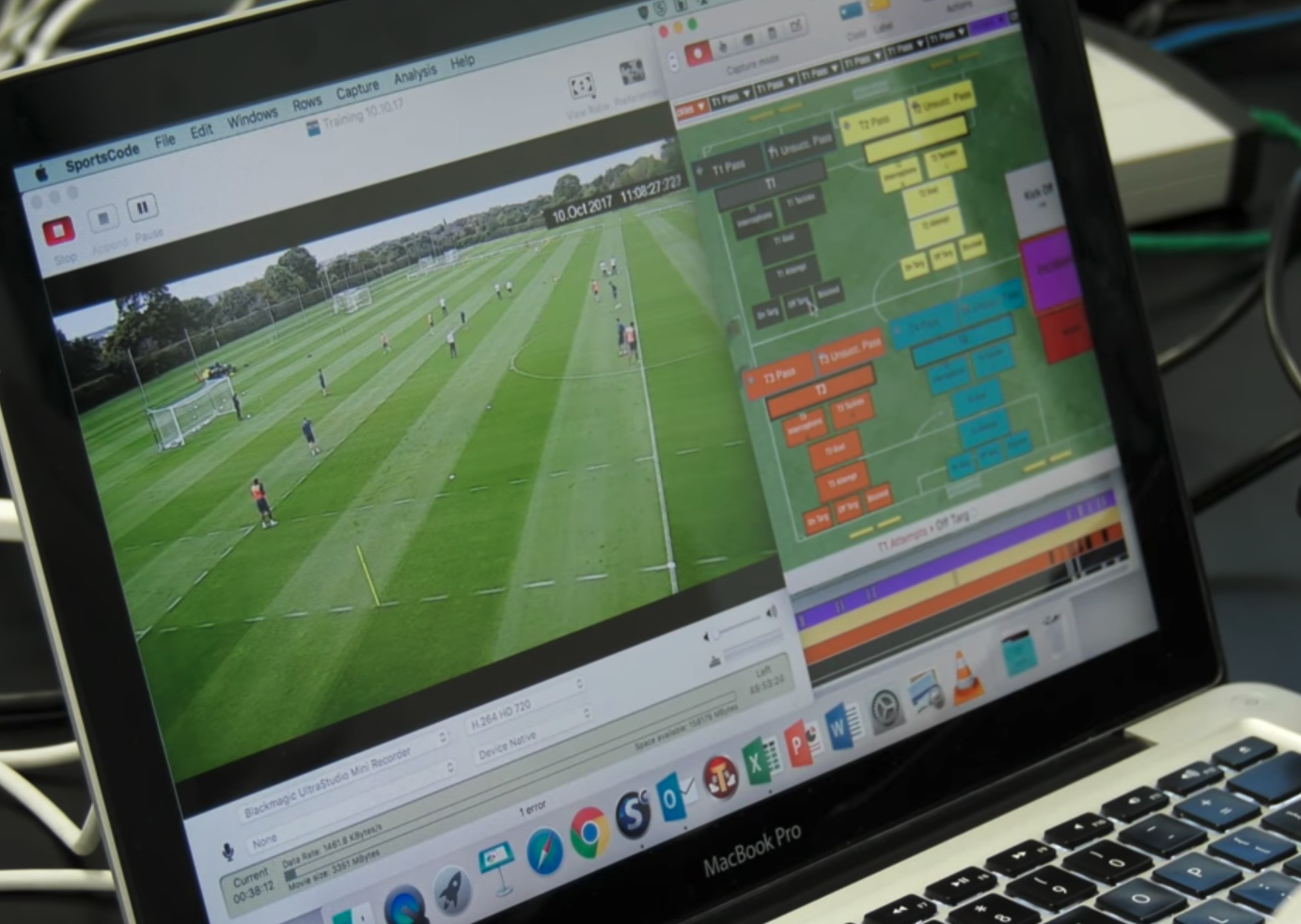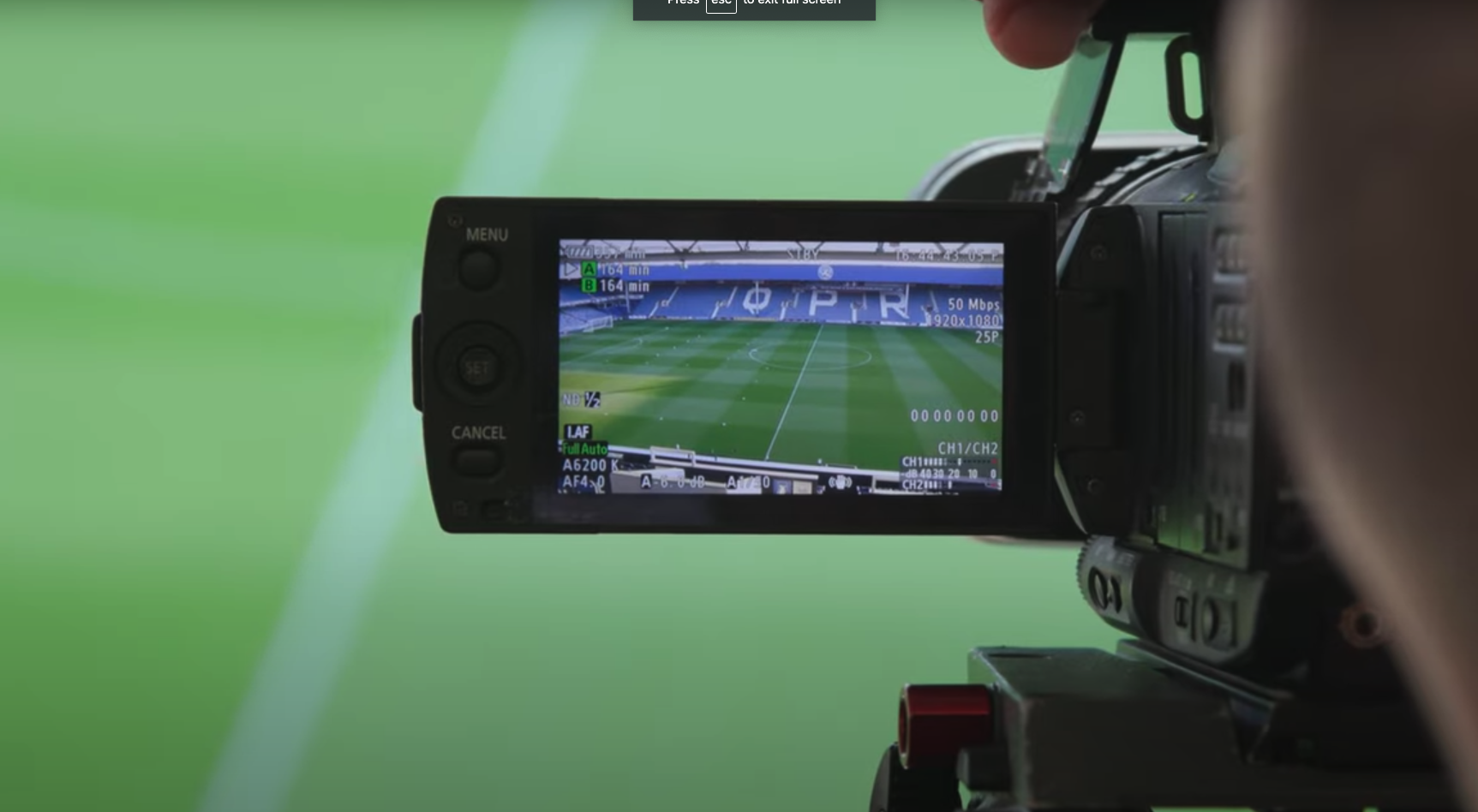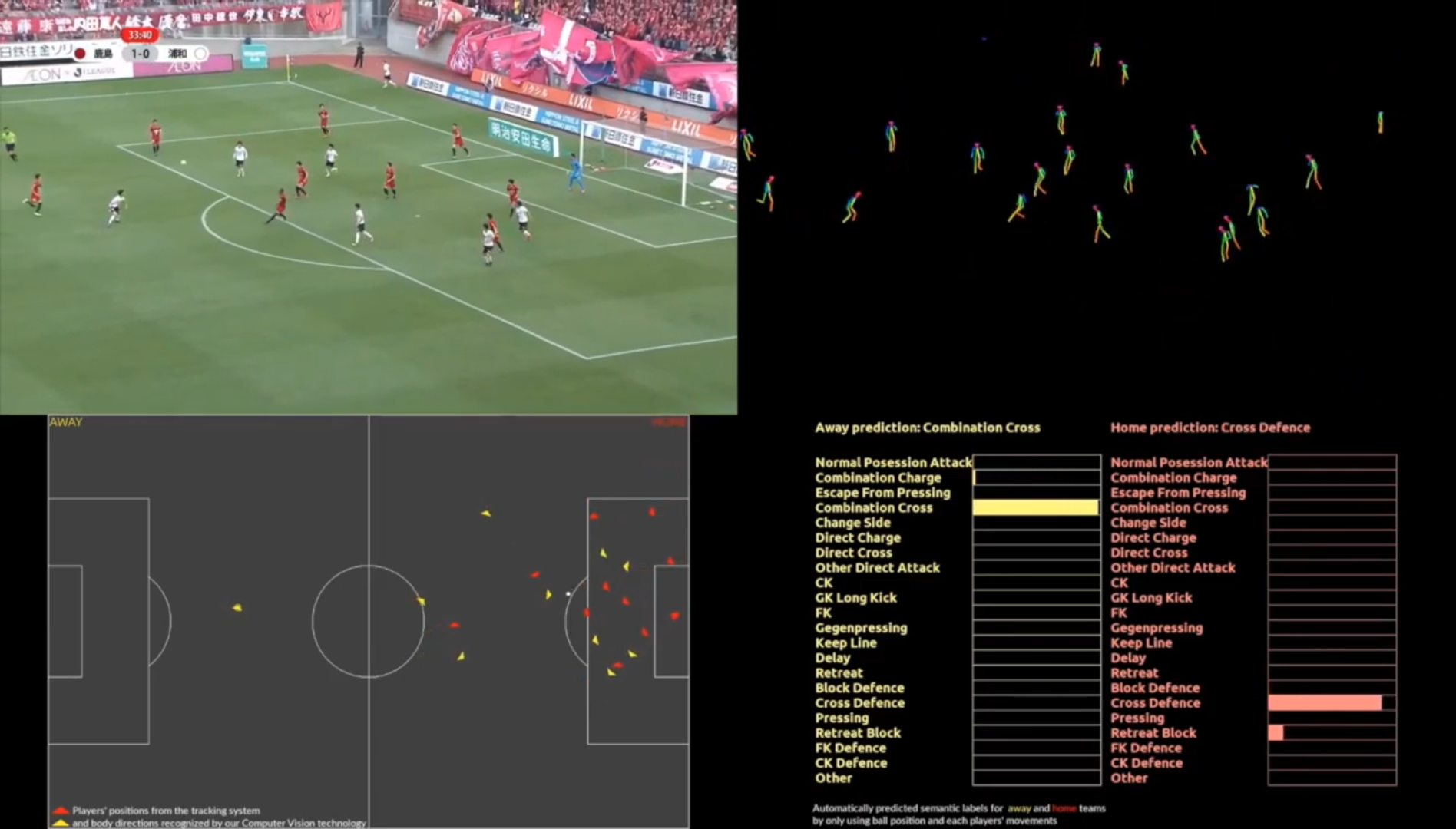Since the early-2000s, the analysis of performance in sport has seen a dramatic transformation in both its methods (i.e. incorporating advanced statistical modelling and new analytical frameworks) and technologies (i.e. GPS tracking, time-lapsed notational analysis software and a large variety of tracking sensors and other tracking equipment). What started as shorthand notations with pen and paper has since evolved to advanced computerised systems and technologies that collect vast amounts of performance-related data.
The rise in lucrative financial opportunities in most major sports thanks to the ever-growing revenues from broadcasting deals and the rising global audiences have inevitably raised the stakes of winning. Consequently, sporting organisations are now turning to more scientific, evidence-based approaches when managing their institutions and developing their athletes. Standards in elite sports to achieve and maintain success are continuously being raised, placing increasing pressure on clubs, coaches and athletes to develop more efficient training structures, enhance athlete development processes and gain better understanding on the factors that determine success in major tournaments.
The highly competitive environment with constantly narrowing margins have triggered the emergence of Performance Analysis as an independent, yet interdisciplinary, backroom function that specialises on the objective, and most often quantitative, evaluation of performance. This relatively new field aims to support coaches in identifying key areas of performance requiring attention, evaluating the effectiveness of tactical and technical performance, as well as the strengths and weaknesses of upcoming oppositions. Its purpose is to provide valid, accurate and reliable information to coaches, players and any relevant stakeholders to augment their knowledge on a particular area of the sport.
Traditionally, Sports Performance Analysis has been defined as an observational analysis task that goes from data collection all the way to the delivery of feedback, and aims to improve sports performance by involving all coaches, players and analysts themselves. The observation of performance is carried out either live during the sporting event or post-competition through video footage and gathered statistics. Performance Analysts can now be spotted in stadiums, whether in the coaching box or a separate good viewing location within the stands, notating events and actions from the match using specialised software, such as SportsCode, Dartfish or Nacsport. In this process, they develop statistical reports that can be sent in real-time to the devices used by coaches (i.e. iPhones or iPads) and display to them a summary of key performance metrics, as well as short video feeds of key highlights. However, the additional time available in post-match analysis allows for a more detailed evaluation of performance using additional complementary sources of data. The data used during post-match analysis can come from sources beyond the analyst’s observations, such as qualitative data, video sequences and even measurements athletes’ exertion, heart rate, blood lactate levels, acceleration, speed and location metrics collected through wearable devices. Some of these data will often be sourced internally within the club but external sources, such as that of data provides like Opta, are often utilised across multiple sports to complement internal databases. Training sessions are also subject to analysis, with continuous monitoring of players to inform debriefing sessions by coaches and help plan the next session.
Research in the field has also emerged as its own specialised field. The International Journal of Performance Analysis in Sport now regularly publishes studies on key sports analysis research areas, such as the identification of key performance indicators, injury prevention through work-rate analysis and physical analysis, movement analysis, coaches’ behaviours and feedback processes, effectiveness of technique and tactics, normative profiling, overall match analysis and even the analysis of referees’ performance.
Performance Analysis As Its Own Backroom Function
Over the last two decades, Performance Analysis has established itself in many top sporting clubs and organisations as a pivotal element in the extrinsic feedback process that coaches use to accelerate the learning process and assist athletes reach their optimal performance levels. It is now considerate its own separate function within the backroom staff of a team, having differentiated itself from other sports science disciplines its core focus on quantitative performance evaluation, yet with a high degree of cross-functional aspects requiring it to maintain a close relationship with wider sports science disciplines. For instance, a work-rate analysis performed by a Strength & Conditioning department may complement the work of a Performance Analyst team on informing player selection based on both performance metrics and player fitness.
The Purpose Of Performance Analysis In Sport
The large volume of quantitative and qualitative information produced from the complex and dynamic situations in sport needs to be carefully disseminated and clearly presented – using clear visuals such as tables, charts or special-purpose diagrams of the playing surface - to allow coaches to obtain quick insights on areas requiring their attention. Performance Analysis enhances the coach’s ability to ‘feed-forward’. It aims to anticipate an opposition’s strengths and weaknesses by performing thorough opposition analysis to produce acquired knowledge that allows the team to rehearse appropriate plays and improve those individual skills that would aid to outperform the upcoming opponent.
The insights generated through Performance Analysis work such as opposition analysis help coaches make informed decisions on tactical choices and squad selection that would better exploit the weaknesses and overcome the strengths of a given opponent. Traditionally, these decisions were made in its entirety following a coach’s acquired wisdom through years of experience in the sport, often having previously played at elite levels themselves. However, studies have repeatedly proven that coach recall capacity of critical incidents that take place in a sporting event is limited to between 42% and 59% of events. On top of that, the events that are remembered are prone to incompleteness, emotional bias, inaccuracy and misinterpretation due to the natural flaws in human perception and cognitive capacity. Cover for these limitations in an increasingly more competitive environment coaches have turned to technology and analytics to have immediate access to both objective information of past events as well as instant video footage to review specific events they wish to recall and re-evaluate. For this, most top-level coaches now benefit from their own Performance Analysts departments that provide them with the necessary data collection, data manipulation, analytical and video analysis skills to allow them to take advantage of the vast amounts of information generated from their sport, yet receive those key elements most important to them in a clear, timely and concise manner.
The Scope Of Performance Analysis In Sport
Technical Analysis
The development of better athletes, from elite levels to grassroots programs, has been a key focus of the field of Performance Analysis in Sports over recent years. The mechanical detail of skills performed by athletes are carefully analysed to detect flaws in technique, monitor progress and identify changes during preparation or even assess rehabilitation from injury. The effectiveness in which an athlete performs specific skills or a broader passage of play is measured, compared and classified, either positively or negatively, against a predetermined expected outcome. For example, a coach may expect a minimum passing completion rate from its midfielders or a minimum speed from its wingers in football. Often, these measurements are presented as ratios or percentages of successfully performed skills, such as the percentage pass completion or tackling success. They are then used to develop performance profiles of players that are used to benchmark and compare them against teammates or rival players.
Tactical Analysis
Similarly, tactical analysis carried out by Performance Analysts help coaches better understand the impact of their tactical decisions. It can also help identify specific tendencies and preferred tactical setups by opposing teams. By leveraging the latest video analysis and player tracking technologies, Performance Analysts are now increasingly more capable of evaluating patterns of play in conjunction with skills performed, location on the field, timings and players involved to draw an accurate representation of tactical variances given particular match scenarios.
Physiological Analysis
Player movements are also carefully assessed to ensure they achieve positions of advantage, as well as desired velocities, distance covered and speed ranges. This line of work by Performance Analysts is closely complemented with the work by a Strength & Conditioning team. The aim is to enable the athlete to achieve their optimal physical condition by providing performance analysis on areas relating their strength, power, endurance, agility, stability and mobility. Injury prevention is also a priority, especially in sports with intense physical contact where likelihood of injury is high. GPS trackers and other wearable technologies are combined with video analysis to understand the physical efforts that players go through during training and matches and allow coaches to better manage the intensity of sessions.
Psychological Analysis
Psychological training is a key element of the coaching process when it comes to mentally preparing athletes to the pressures of a sport and the challenging conditions that may impact their motivations and ambitions of reaching their desired goals. Performance Analysts are able to support coaches through the evaluation of an athlete’s discipline, exertion, efforts and other fluctuations of work-rate that could be associated to mental factors it an attempt to minimise effects of negative mental influences and positively influence athletes. Most often, Performance Analysts use their video analysis abilities to create motivational clips and video highlights that can support coaches with the mental preparation of their teams and athletes.
Equipment And Technologies In Performance Analysis In Sport
Today, most Performance Analysis departments at elite clubs start their analytical process by recording video footage of training sessions and competitive events. Often, more than one HD camcorder is set up at high viewpoints on the sidelines of training pitches or stadiums to collect footage in various angles, whether is at a closer angle capturing just a few players or a wider angle of the full sections of the pitch. In some instances, drones are also used to capture an even wider angle from above the players on the pitch to be able to clearly identify gaps during plays or structural setups and formations. Certain actions during training sessions may also allow for the Performance Analyst to get physically closer to the play and use a handheld camera, such as a GoPro, to capture an additional angle that shows closer movements and player technique. The footage from the camcorders is captured into SD cards inside the cameras or directly into a laptop using media management software, such as Media Express from BlackMagic Design. Often both are used in conjunction to act as a backup of each other. Alternatively, Performance Analysts may also obtain video feeds for certain matches or competitive events that are broadcasted from the broadcasters themselves, freeing up their time to perform additional real-time data collection and analysis during the event.
Once the video footage is gathered, Performance Analysts leverage the capabilities of time-lapsed computerised video analysis software, such as SportsCode, Dartfish or Nacsport, to notate key events and actions and generated meaningful data for later analysis. These solutions allows them to replay the training session or match and tag key events to construct a database with frequency counts, length of specific actions and supportive contextual information of each individual action (i.e. whether a tackle was successful or a missed opportunity). Coaches and players can later go through the coded timeline of the event and view specific video highlights automatically generated by the software. Analysts would then export the frequency data into data manipulation and analysis software, often being Microsoft Excel, and perform further analysis on the data and combine it with historical datasets, data from wearable tracking devices - often players wear GPS trackers, such as Catapult, StatSports or Playertek - or even data obtained from external sources and data providers, such as Opta.
The insights generated from the analysis are then delivered to the interested parties, coaches or players. The method of delivery varies greatly from club to club and depends greatly on the audience receiving the information. Summary reports may be printed and distributed amongst players and coaches with key statistics and areas requiring attention. In other occasions, data visualisation software such as Tableau may be used to interactively display charts and other visuals of team and player performance. Most often, coaches and players get a great deal of value from watching replays and highlights of the areas being analysed. Therefore, analysts often create short highlights clips using video editing tools, such as CoachPaint, KlipDraw, Adobe After Effects or Premiere Pro, or simply Apple’s iMovie application, to produce a combination of notated footage that clearly displays the information they want to portray to the coaching staff and team.
What Is Next For Performance Analysis In Sport?
As technology continues to evolve and data-related solutions increasingly bring new functionality to the field, the field of Performance Analysis will continue to grow. New technologies will bring new opportunities for sporting organisations to become even more competitive and better maximise their athlete’s potential. Inevitably, as a club’s main goal is to outperform and outsmart its competitors, this will continue to raise the standards of success in all major sports, where investment in solutions and human resources that allow them to exploit these new opportunities will continue to increase overtime, given that the financial incentives of winning will remain lucratively attractive to owners and investors.
However, further advances in technology and the sophistication of processes will also bring new complexities to the environment that Performance Analysts will operate in. This will place additional pressures to the skills demanded in the field, where not only a good acumen of a sport and coaching processes will be needed, but also highly technical skills to effectively navigate a growing data ecosystem will be essential. Inevitably, some of the current manual and repetitive tasks will be automated using modern solutions. For instance, analysts often make use of video analysis software to manually code every single event as it takes place in the footage. However, computer vision could eventually replace these repetitive and labour-intensive tasks during data collection from video footage by automatically detecting and tracking players and moving objects (i.e. the ball) in the field and performing frequency counts using pre-programmed functions. This automation enable clubs to free-up resources from the Performance Analysis departments and allow analysts to reallocate their time into generating insights through deeper analysis of the collected data.
The field of Performance Analysis is, today, at its early stages. Different sports are at different stages in their adoption of this new and critical function inside their backroom teams. Some are not yet considering Performance Analysis a priority when hiring and developing such teams. The novelty of the field, a limited understanding of its use and benefits by owners and club decision-makers, as well as the competitive labour market, where wealthy companies from other industries are also interested in hiring individuals with an analytical and technical skillset, has challenged the consolidation of Performance Analysis in certain sports. However, not all sporting clubs and institutions have been slow at their incorporation of specialised analysis of performance. Wealthier and more established clubs have been able to experiment and appreciate the benefits of investing in the skillsets that have allowed them to better understand key factors of success and develop their athlete’s performance through acquired knowledge that has placed them above their rivals. These innovative actions taken by top-tier teams have usually had an effective trickle-down effect on the rest of clubs within a sport, where the rest of rivals follow suit in order to remain competitive. As the field continues to grow in line with technology, we will undoubtably see an exciting evolution in the composition and structures of coaching teams and sporting organisations as a whole.
Citations and useful resources:
Laird, P., & Waters, L. (2008). Eyewitness recollection of sport coaches. International Journal of Performance Analysis in Sport, 8(1), 76-84.
McGarry, T., O'Donoghue, P., & de Eira Sampaio, A. J. (Eds.). (2013). Routledge handbook of sports performance analysis. Routledge.
O'Donoghue, P. (2009). Research methods for sports performance analysis. Routledge.
O'Donoghue, P. (2014). An introduction to performance analysis of sport. Routledge.





